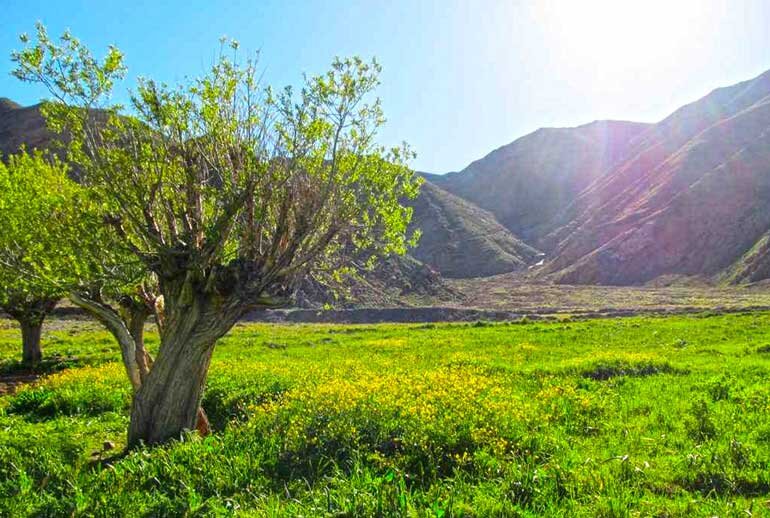Dasht-e Havij: a scenic escape from Tehran’s hustle and bustle

TEHRAN – Dasht-e Havij (aka Gorchal), the plain situated just 22 kilometers from Iran’s capital, offers breathtaking views of Mount Damavand and a perfect escape from Tehran’s urban life.
Situated at an altitude of 2,400 meters above sea level, Dasht-e Havij lies above the village of Afjeh in the Lavasanat region. From this elevation, visitors can enjoy a clear view of the majestic Mount Damavand, immersing themselves in the area’s tranquility.
For those residing in Tehran or its neighboring cities, Dasht-e Havij offers an ideal destination for a one-day excursion.
The peculiar name “Havij,” which translates to “carrot,” has historical roots. Various accounts suggest that in the past, a significant portion of this plain was dedicated to carrot cultivation, though no traces of these fields remain today. The name “Gorchal” combines “Gor” (meaning fire in ancient Persian) and “Chal” (meaning place), indicating a “place of fire.” This name likely reflects the plain’s relatively warmer climate compared to the surrounding peaks.
Dasht-e Havij is more than just a scenic area; it is also rich in historical significance. During the Safavid and Qajar eras, the plain was a popular hunting ground for royalty and nobility. Caravanserais were built along the route from Dasht-e Havij to Lar plain to accommodate travelers.
Historical remnants from the Safavid era, such as caravanserais, can still be seen along the route.
Visitors to Dasht-e Havij will find numerous attractions. At the start of the route, Paskoohak waterfall overlooks the valley and is a must-see. The waterfall is surrounded by unique vegetation and maple trees, adding to the area’s charm.
To the northwest, lies Saboustan plain, where features a 50-meter-high waterfall and is rich with fruit trees like plum, cherry, and walnut.
In the same region, an old Safavid-era bathhouse still in use by the villagers, can be visited.
In Afjeh village, day-trippers can explore the Saqakhaneh of Hazrat Abolfazl as well as a 500-year-old plane tree, both located in charming Cheraghan neighborhood.
Given its warmth, summer is not ideal for visiting Dasht-e Havij. However, the area transforms beautifully in autumn and winter, becoming a popular spot for winter sports. Spring is the best time to visit, when nature revives, and the plain is at its most vibrant.
Dasht-e Havij boasts wild plants along with trees like walnut and cherry. The plain is lush in warmer months and turns orange in autumn. In spring, melting snow from the surrounding mountains creates seasonal streams and waterfalls. Whether you enjoy hiking the surrounding peaks or camping under the shade of the trees, Dasht-e Havij offers something for everyone.
XF
